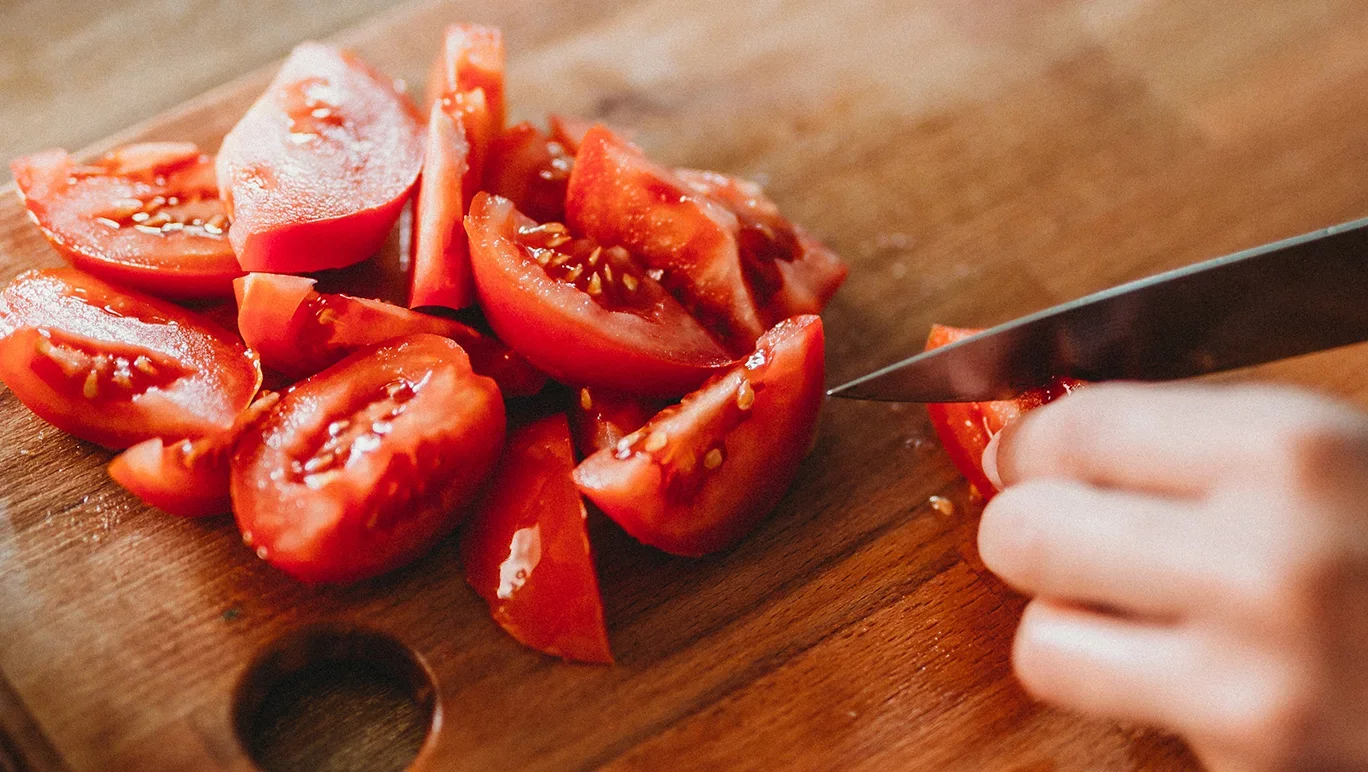Are Tomatoes Low FODMAP?

Key points:
- Tomatoes are low FODMAP when eaten in small portions so it’s really dependent on your portion size.
- Tomatoes come in different varieties and there are many types of tomato products, which means they’re all going to have different FODMAP levels. So it matters whether you’re eating a common tomato, sun-dried tomatoes or tomato paste.
- The FODMAP culprit in tomatoes is fructose, a type of short-chain carbohydrate found in fruit that’s poorly absorbed in the digestive system for some individuals.
There’s nothing like fresh, juicy tomatoes to throw into a quick and easy dish, but when it comes to FODMAPs and tomatoes, not all tomatoes are created equal. While there are many varieties of this fruit we often treat as a vegetable, there are only four popular varieties - the common tomato, roma tomatoes, truss tomatoes and cherry tomatoes - have been tested for FODMAPs, according to the Monash University FODMAP Diet App.
Let’s take a look at the FODMAP friendly amounts in fresh tomatoes:
- Common tomato - these are often found all year round and are a staple ingredient in many households. Half a small tomato (65g) is considered low FODMAP, but once you hit over 75g, they do become moderate to high FODMAP.
- Roma tomato - also known as plum tomatoes, roma tomatoes are low FODMAP at 48g serves, which is about 2/3 of a Roma tomato.
- Cherry tomatoes - an easy and convenient way to enjoy tomatoes, cherry tomatoes are only low FODMAP at three cherry tomatoes (45g). That’s not much if you’re a fan! Any more than that, they do become moderate to high FODMAP.
- Truss tomatoes - like the common tomatoes, truss tomatoes are low FODMAP at half a tomato (69g).
Like any food, determining its FODMAP level depends on the form it comes in and how much of it (or portion size) you’re going to be eating, so other variations of tomato and tomato products are going to have different FODMAP levels.
Popular types of tomato products
- Tomato sauce - on pies or with fries, tomato sauce adds that sweet and tangy taste that makes food even more enjoyable, but you’ll need to watch your portion size. A small 16g serve of tomato sauce is low FODMAP.
- Tomato paste - this super concentrated version of tomato sauce is low FODMAP at 2 tablespoons or a 28g serve.
- Canned tomatoes - you can often find two versions of canned tomatoes: plum tomatoes and round tomatoes, both in juice. Both are low FODMAP at a ½ cup serve, which is 100g.
- Sun-dried tomatoes - who doesn’t love these intense tomatoes that’s perfect on pasta or pizza? You can still enjoy them at 3 pieces, which is about 8g.
- Tomato puree - ideal for soups and stews, tomato puree is low FODMAP at 2 tablespoons or a 36g serve, any more can contain moderate to high amounts of fructose.
- Ketchup - not to be confused with tomato sauce, ketchup is a popular condiment often sweetened with sucrose or high fructose corn syrup and is considered low FODMAP at 13g.
- Tomato based pasta sauce containing garlic and onion - this is a high FODMAP food at ¼ cup containing the FODMAP culprits galacto-oligosaccharides and fructans.
- Tomato chutney with garlic and onion - A small 25g or 1 tablespoon is low FODMAP.
- Vegetable based tomato juice - 200ml is considered low FODMAP, so you can enjoy a glass and feel good about it!
Summary
Tomatoes can be enjoyed on a FODMAP diet, however portion size is important. While fresh tomatoes and most tomato products are generally low FODMAP in small portions, it’s important to keep your intake in check as it’s very easy to enjoy these foods, such as tomato sauce, tomato paste and tomato chutney, more than the FODMAP friendly amount.
Need help with the low FODMAP diet? Our FREE dietitian developed program will guide you through it, step-by-step. Includes a low FODMAP food guide. Sign up now.
If you are experiencing gut symptoms and have not been recommended a low FODMAP diet by a healthcare professional, get started with the manage your gut symptoms program.
Related Articles:
- Low FODMAP Diet: What is it and how does it work?
- Low FODMAP vegetables list
- The low FODMAP food list
Reviewed by healthylife health experts February 2023.